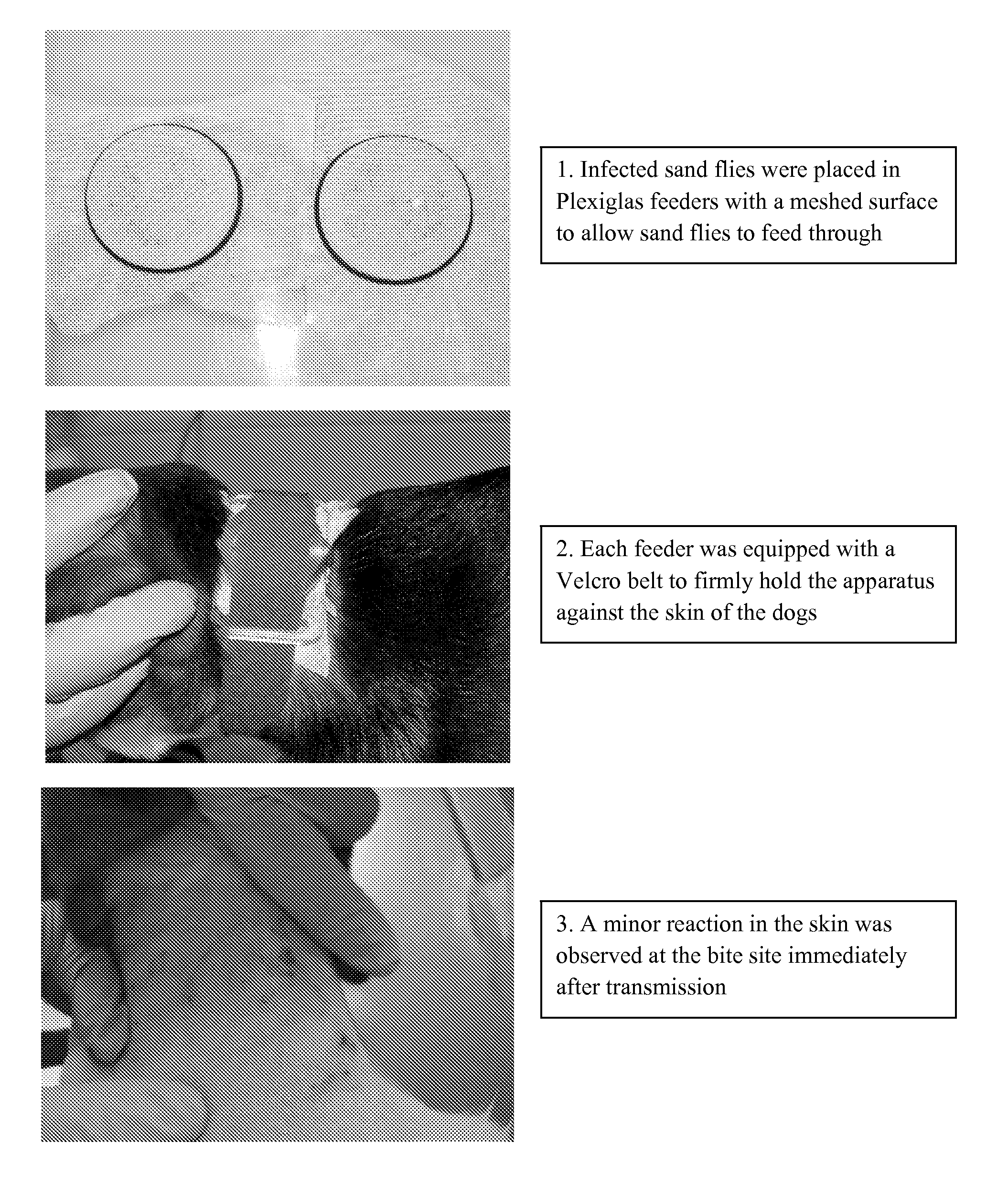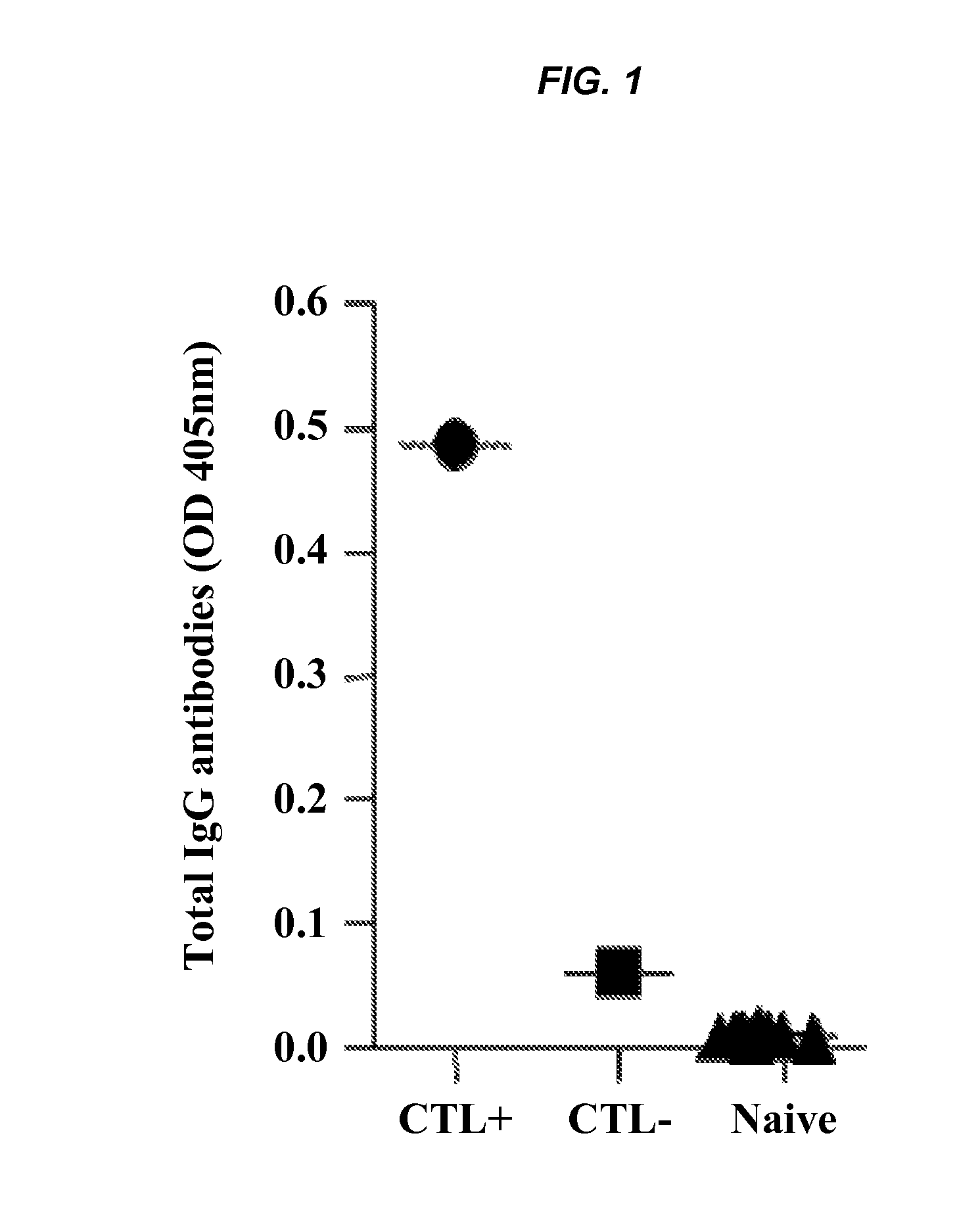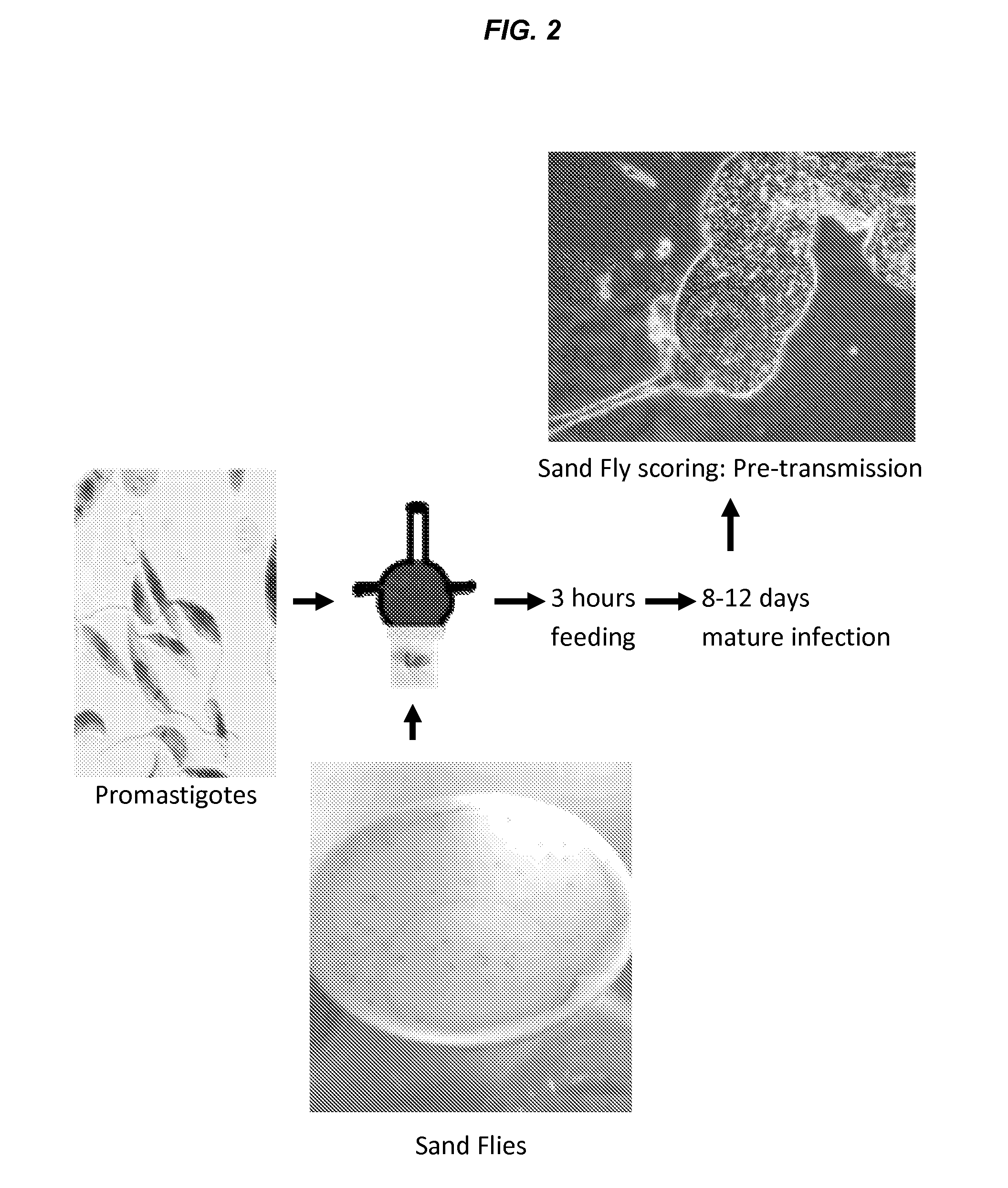Leishmania Challenge Model
a leishmania challenge and model technology, applied in the field of reproducible models for dogs, can solve the problems of inability to effectively control leishmania in dogs, limited treatment options for leishmania in dogs, and invariably fatal leishmania, and achieve the effect of reproducible infection and effective infecting
- Summary
- Abstract
- Description
- Claims
- Application Information
AI Technical Summary
Benefits of technology
Problems solved by technology
Method used
Image
Examples
example 1
Infection of Beagles Using Lu. Longipalpis Vector Sand Flies
[0057]A total of eight Beagles were infected by 10-50 infected Lu. longipalpis vector sand flies using a stringent protocol to ensure a reproducible infection in dogs. The following steps were taken:
[0058]1. Selected male Beagles six months or younger for infection. Test the dogs for previous exposure to sand fly salivary proteins, here Lu. longipalpis, using ELISA (FIG. 1).
[0059]2. Infected vector sand flies, here Lu. longipalpis, with a recent virulent isolate of L. infantum, obtained from a sick dog. This is a vital step as the parasites lose virulence for dogs after passage in the laboratory; parasites beyond 3 passages in culture will not be used.
[0060]3. Sand flies were infected with blood containing up to 4 million parasites per ml using a membranous reservoir apparatus (FIG. 2).
[0061]4. Monitored the sand fly infection over 10-12 days, on days 2, 7, 10 and 12 to follow the progression of the infection along the sand...
PUM
 Login to View More
Login to View More Abstract
Description
Claims
Application Information
 Login to View More
Login to View More - R&D
- Intellectual Property
- Life Sciences
- Materials
- Tech Scout
- Unparalleled Data Quality
- Higher Quality Content
- 60% Fewer Hallucinations
Browse by: Latest US Patents, China's latest patents, Technical Efficacy Thesaurus, Application Domain, Technology Topic, Popular Technical Reports.
© 2025 PatSnap. All rights reserved.Legal|Privacy policy|Modern Slavery Act Transparency Statement|Sitemap|About US| Contact US: help@patsnap.com



